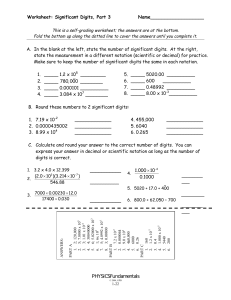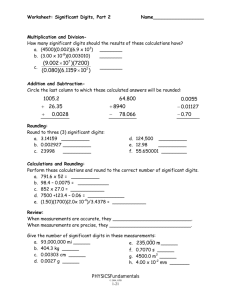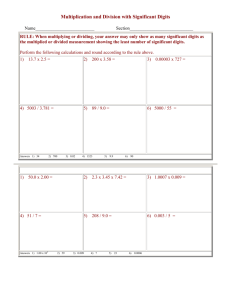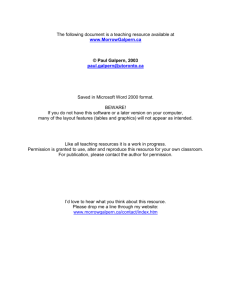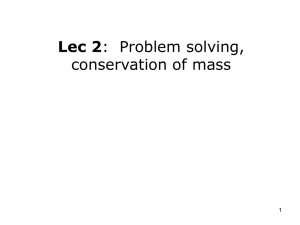1-32,33 -Review Sheet
advertisement
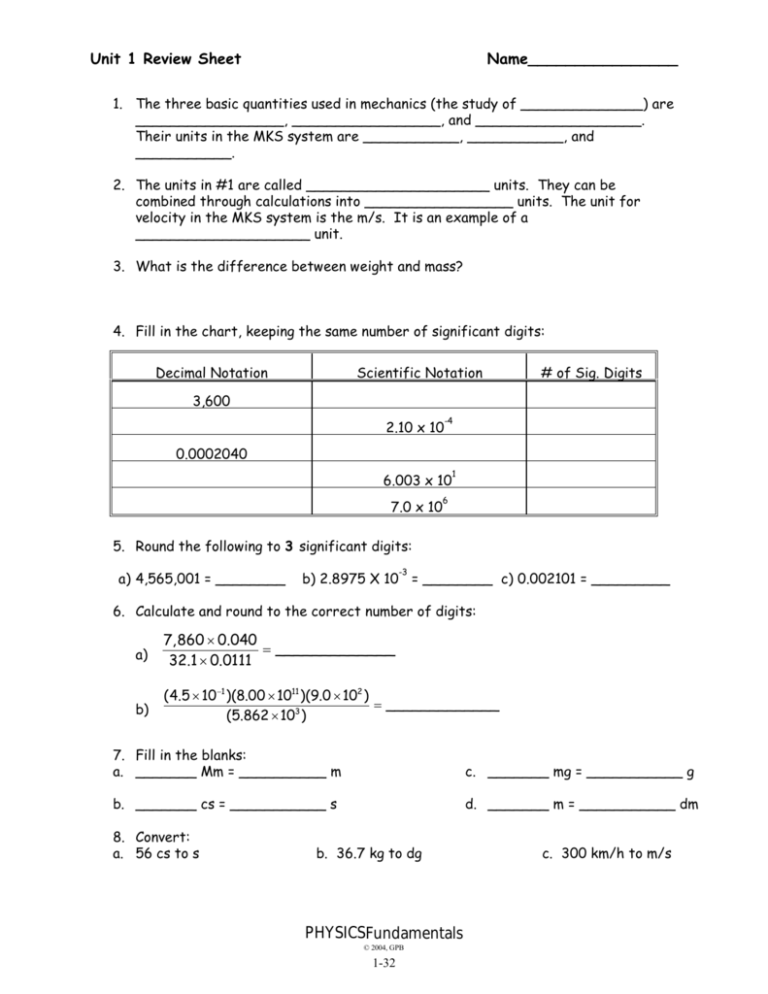
Unit 1 Review Sheet Name________________ 1. The three basic quantities used in mechanics (the study of ______________) are _________________, _________________, and ___________________. Their units in the MKS system are ___________, ___________, and ___________. 2. The units in #1 are called _____________________ units. They can be combined through calculations into _________________ units. The unit for velocity in the MKS system is the m/s. It is an example of a ____________________ unit. 3. What is the difference between weight and mass? 4. Fill in the chart, keeping the same number of significant digits: Decimal Notation Scientific Notation # of Sig. Digits 3,600 -4 2.10 x 10 0.0002040 1 6.003 x 10 6 7.0 x 10 5. Round the following to 3 significant digits: a) 4,565,001 = ________ -3 b) 2.8975 X 10 = ________ c) 0.002101 = _________ 6. Calculate and round to the correct number of digits: a) 7,860 0.040 _____________ 32.1 0.0111 b) (4.5 10 1 )(8.00 1011 )(9.0 102 ) _____________ (5.862 103 ) 7. Fill in the blanks: a. _______ Mm = __________ m c. _______ mg = ___________ g b. _______ cs = ___________ s d. _______ m = ___________ dm 8. Convert: a. 56 cs to s b. 36.7 kg to dg PHYSICSFundamentals © 2004, GPB 1-32 c. 300 km/h to m/s 9. ________________ refers to the closeness of a measurement to an accepted value. ______________ refers to the reproducibility of a measurement. 10. A scientist fed identical plants with different masses of fertilizer and measured the growth of the plants each week. From the data, he constructed a graph. Indicate 5 errors in the graph. Mass of Fertilizer (g) Plant Growth (cm) 0.0 2.2 2.0 9.0 4.0 14.2 5.0 17.0 6.0 16.0 Use the graph above (even though it has errors) to find the plant growth expected from the use of 3.0g of fertilizer. 11. What is the difference between interpolation and extrapolation? 12. When graphing data, the ________________ variable is placed on the x-axis and the _________________ variable on the y-axis. 13. How do the graphs of direct and inverse proportions differ? How is a proportion changed into a mathematical equation? 2 14. A formula used often in physics is K.E. = ½ mv . If kinetic energy (K.E.) is held constant, mass (m) is ___________________ proportional to velocity squared 2 (v ). If velocity is held constant, kinetic energy is ____________________ proportional to mass. 15. Study all your notes, worksheets, quizzes, and labs! PHYSICSFundamentals © 2004, GPB 1-33

